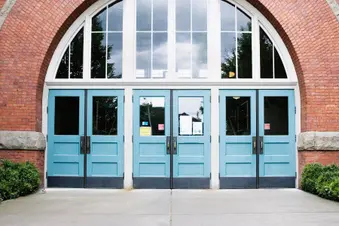
If you have a child with SMA Type 3 (SMA3), there are some extra steps you’ll need to take to make sure that their school gives them the environment they need to learn and flourish academically as well as a youngster without this condition.
“While children with all forms of SMA have some physical limitations, it shouldn’t affect them from being able to access their classroom and learning next to their peers,” says Selene Almazan, legal director of the Council of Parent Attorneys and Advocates, an organization that protects the legal and civil rights of students with disabilities and their families.
The Early Years
When your child is between the ages of 1 and 3, they‘ll get services such as physical or occupational therapy through your state’s Early Intervention (EI) Program. After that, as they enter the school system, they’ll be eligible for an Individualized Education Plan (IEP) or a 504 Plan. These plans spell out the specific services, modifications, and accommodations that your child will get from the school district.
Children with SMA are often eligible for free preschool through the public school system to provide needed services, Almazan says. The district will most likely assign them a paraprofessional or aide at this time. This person will help them get around, lift or move objects, and use the bathroom.
You and the aide will want to keep in mind that your child will most likely want to socialize and do everything their peers do. “My daughter couldn’t ride a tricycle, but when her friends in preschool all rode theirs, her aide would push her in her wheelchair so she could follow along on the same little path,” recalls Victoria Strong, an SMA advocate whose oldest daughter, Gwendolyn, had SMA Type 1.
Navigating the Classroom
Your child may start kindergarten with SMA3, or they may be just getting that diagnosis in elementary or middle school. Either way, it’s important to remember that your school district is legally required to make any classroom modifications necessary to accommodate your child’s physical needs, stresses Almazan. The district is also required give your instruction in what’s called the least restrictive environment (LRE). This usually means in the general education classroom with their peers, she adds.
There are some other things to ask your district for:
Reasonable access to the school and classroom. When Jennifer Miller’s daughter, Madison, who has SMA Type 2, entered kindergarten, Miller was shocked that there was only one wheelchair-accessible entrance to the local elementary school, and that was all the way in the back. “My first thought was what would we do if it was pouring rain?” Miller recalls. She was able to switch her daughter to another school in the district that was more accessible.
By age 14, about half of kids with SMA3 aren’t able to walk. Even if your child isn’t in a wheelchair, there should still be accommodations, says Almazan. This may include making sure all classrooms they go to are close together, to lessen the distance they have to travel. If the school has more than one level, there should also be an elevator.
The school’s Emergency Evacuation Plan should also take your child’s needs under consideration. For example, it should state who will go with them in the event of an emergency. Also, a “safe room” for them to go to in the case of fire should be set up for them with the help of your local fire department.
Adaptive equipment. Kids with SMA3 often find that their legs are weaker than their arms, and that it affects the muscles closer to the center of their body more severely. Your school’s occupational therapist should recommend adaptations to desks and chairs so that your child can be comfortable in their classroom. They may also need modified written assignments or computer technology that uses voice command typing.
Home-bound instruction. Children and teens with SMA3 may be more likely to have complications from respiratory infections because their respiratory muscles are weaker. This may mean that they need to stay home during the COVID-19 pandemic, or during the annual flu season, says Almazan.
If this is the case, your school is legally required to provide what’s known as a free and appropriate public education (FAPE) for the student at home. “Unfortunately, many schools will only do the bare minimum the state requires, and it’s up to parents to push for more,” says Almazan.
Adaptive physical education. Your school’s physical therapist can help modify gym and recess time so your child can take part. They may also create goals for the IEP that focus on helping your child maintain their physical strength and endurance, as well as their flexibility and range of motion.
Modified school events. Field trips and school events should take your child’s needs into account. For any event, the school should make sure that your child doesn’t have to travel too far from the bus to the door and that the event is wheelchair- and walker-accessible.
To help your child’s classmates understand this condition, it may help to create a letter to them and their parents. This can include information like:
- SMA isn't contagious.
- What your child can and can't do.
- Why your child has an aide.
- Why it’s dangerous for your child to catch a cold.
- How to reach you with questions or concerns.
Show Sources
Photo Credit: Andersen Ross Photography Inc / Getty Images
SOURCES:
Selene Almazan, legal director, Council of Parent Attorneys and Advocates, Silver Spring, MD.
Cure SMA: “At School.”
SMA Europe: “Type 3.”
Muscular Dystrophy Association: “School Accommodation Recommendations for SMA.”
Jennifer Miller, parent and SMA advocate, Fort Lauderdale, FL.
Victoria Strong, executive director, Gwendolyn Strong Foundation, Santa Barbara, CA.